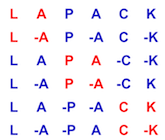499 SUBROUTINE dsysvxx( FACT, UPLO, N, NRHS, A, LDA, AF, LDAF,
501 $ EQUED, S, B, LDB, X, LDX, RCOND, RPVGRW, BERR,
502 $ N_ERR_BNDS, ERR_BNDS_NORM, ERR_BNDS_COMP,
503 $ NPARAMS, PARAMS, WORK, IWORK, INFO )
510 CHARACTER EQUED, FACT, UPLO
511 INTEGER INFO, LDA, LDAF, LDB, LDX, N, NRHS, NPARAMS,
513 DOUBLE PRECISION RCOND, RPVGRW
516 INTEGER IPIV( * ), IWORK( * )
517 DOUBLE PRECISION A( LDA, * ), AF( LDAF, * ), B( LDB, * ),
518 $ X( LDX, * ), WORK( * )
519 DOUBLE PRECISION S( * ), PARAMS( * ), BERR( * ),
520 $ err_bnds_norm( nrhs, * ),
521 $ err_bnds_comp( nrhs, * )
527 DOUBLE PRECISION ZERO, ONE
528 PARAMETER ( ZERO = 0.0d+0, one = 1.0d+0 )
529 INTEGER FINAL_NRM_ERR_I, FINAL_CMP_ERR_I, BERR_I
530 INTEGER RCOND_I, NRM_RCOND_I, NRM_ERR_I, CMP_RCOND_I
531 INTEGER CMP_ERR_I, PIV_GROWTH_I
532 parameter( final_nrm_err_i = 1, final_cmp_err_i = 2,
534 parameter( rcond_i = 4, nrm_rcond_i = 5, nrm_err_i = 6 )
535 parameter( cmp_rcond_i = 7, cmp_err_i = 8,
539 LOGICAL EQUIL, NOFACT, RCEQU
541 DOUBLE PRECISION AMAX, BIGNUM, SMIN, SMAX, SCOND, SMLNUM
546 DOUBLE PRECISION DLAMCH, DLA_SYRPVGRW
558 nofact = lsame( fact,
'N' )
559 equil = lsame( fact,
'E' )
560 smlnum = dlamch(
'Safe minimum' )
561 bignum = one / smlnum
562 IF( nofact .OR. equil )
THEN
566 rcequ = lsame( equed,
'Y' )
577 IF( .NOT.nofact .AND. .NOT.equil .AND. .NOT.
578 $ lsame( fact,
'F' ) )
THEN
580 ELSE IF( .NOT.lsame(uplo,
'U') .AND.
581 $ .NOT.lsame(uplo,
'L') )
THEN
583 ELSE IF( n.LT.0 )
THEN
585 ELSE IF( nrhs.LT.0 )
THEN
587 ELSE IF( lda.LT.max( 1, n ) )
THEN
589 ELSE IF( ldaf.LT.max( 1, n ) )
THEN
591 ELSE IF( lsame( fact,
'F' ) .AND. .NOT.
592 $ ( rcequ .OR. lsame( equed,
'N' ) ) )
THEN
599 smin = min( smin, s( j ) )
600 smax = max( smax, s( j ) )
602 IF( smin.LE.zero )
THEN
604 ELSE IF( n.GT.0 )
THEN
605 scond = max( smin, smlnum ) / min( smax, bignum )
611 IF( ldb.LT.max( 1, n ) )
THEN
613 ELSE IF( ldx.LT.max( 1, n ) )
THEN
620 CALL xerbla(
'DSYSVXX', -info )
628 CALL dsyequb( uplo, n, a, lda, s, scond, amax, work,
630 IF( infequ.EQ.0 )
THEN
634 CALL dlaqsy( uplo, n, a, lda, s, scond, amax, equed )
635 rcequ = lsame( equed,
'Y' )
641 IF( rcequ )
CALL dlascl2( n, nrhs, s, b, ldb )
643 IF( nofact .OR. equil )
THEN
647 CALL dlacpy( uplo, n, n, a, lda, af, ldaf )
648 CALL dsytrf( uplo, n, af, ldaf, ipiv, work, 5*max(1,n),
660 $ rpvgrw = dla_syrpvgrw(uplo, n, info, a, lda, af,
669 $ rpvgrw = dla_syrpvgrw( uplo, n, info, a, lda, af, ldaf,
674 CALL dlacpy(
'Full', n, nrhs, b, ldb, x, ldx )
675 CALL dsytrs( uplo, n, nrhs, af, ldaf, ipiv, x, ldx, info )
680 CALL dsyrfsx( uplo, equed, n, nrhs, a, lda, af, ldaf, ipiv,
681 $ s, b, ldb, x, ldx, rcond, berr, n_err_bnds, err_bnds_norm,
682 $ err_bnds_comp, nparams, params, work, iwork, info )
687 CALL dlascl2 ( n, nrhs, s, x, ldx )
subroutine dsyrfsx(uplo, equed, n, nrhs, a, lda, af, ldaf, ipiv, s, b, ldb, x, ldx, rcond, berr, n_err_bnds, err_bnds_norm, err_bnds_comp, nparams, params, work, iwork, info)
DSYRFSX
subroutine dsysvxx(fact, uplo, n, nrhs, a, lda, af, ldaf, ipiv, equed, s, b, ldb, x, ldx, rcond, rpvgrw, berr, n_err_bnds, err_bnds_norm, err_bnds_comp, nparams, params, work, iwork, info)
DSYSVXX

